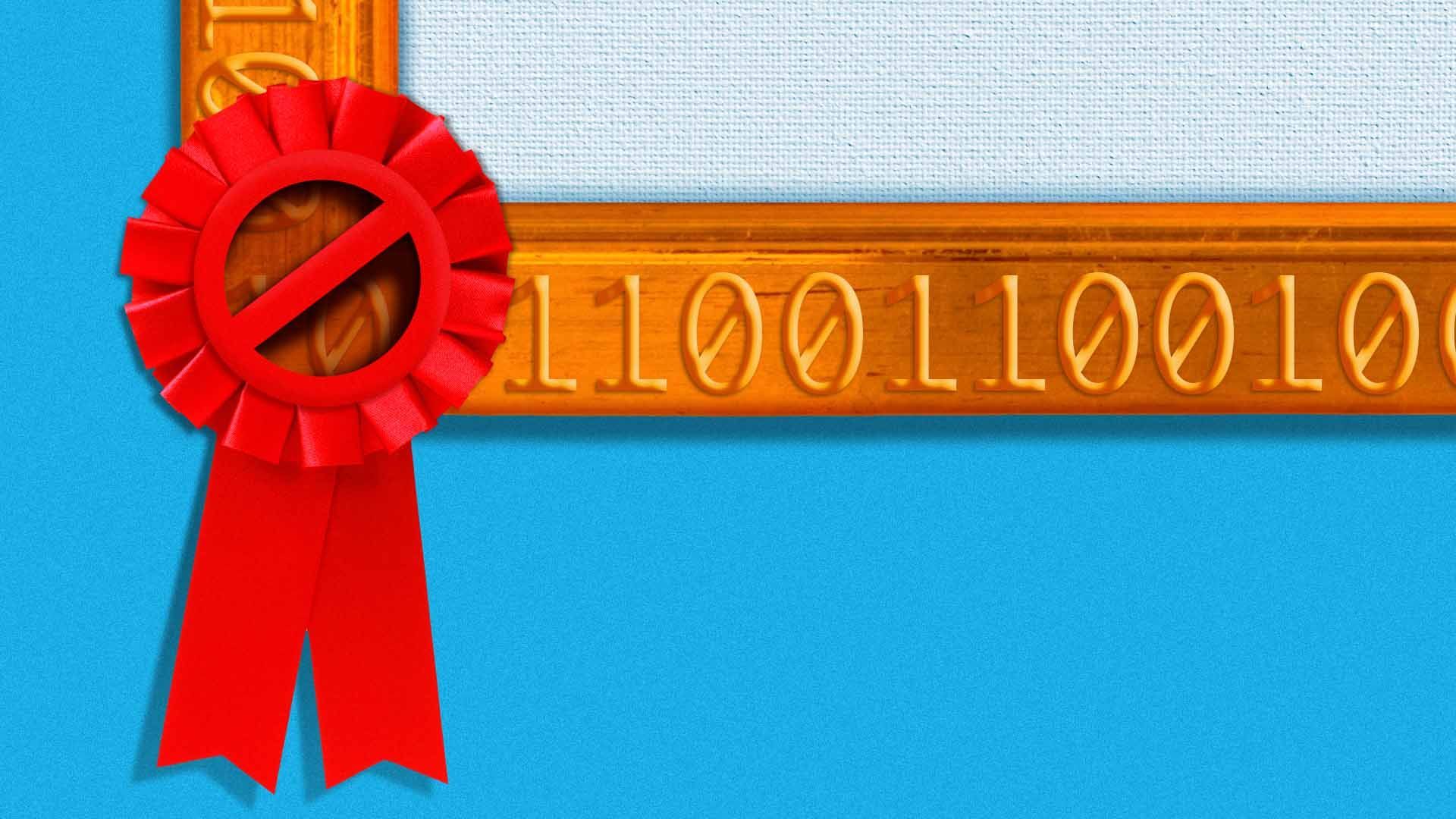Illustration competitions grapple with generative AI

Illustration: Sarah Grillo/Axios
As generative AI tools like Dall-E and MidJourney become more mainstream, some illustration competitions are banning the submission of AI-generated artworks.
Why it matters: Debate in the art world around the impact of technology is nothing new. But AI's unique legal and ethical considerations have prompted some organizations to take a definitive public stance.
Zoom in: Of the nine major illustration competitions Axios reviewed, only three allow AI submissions.
- The ADC Awards told Axios via email that the competition “is the advertising and design industry’s first global awards program to establish a separate discipline with a dedicated jury for AI work.”
- The Society of Publication Designers allows submissions created with AI, but clarified over email that they “are absolutely against art theft, but support artists who use [AI] legally and ethically.”
- Society for News Design currently has no guidelines or bans on AI submissions: “Everything is moving so quickly,” says executive director LeeAnn Mandrillo over email.
Generative AI tools are currently under legal scrutiny for their use of licensed imagery in their training models. Several lawsuits have already been filed against major AI art tools over copyright infringement.
- Complex questions over how the legal system will view human/AI collaborations will need to be settled by the courts.
Mark Heflin, director of American Illustration-American Photography, says that his organization’s stance on prohibiting generative AI is consistent with existing guidelines.
- In the case of generative AI, artists wouldn't be able to say the work is entirely their own — a requirement for the competition.
- “Even if we wanted to change our rules, the concern is the way that some of these generative AI tools have been built by scraping licensed material.” Such training models make confirming authorship of the work precarious, Heflin says.
- The onset of people sharing AI-generated images via apps like Lensa and Dall-E on social media prompted the Society of Illustrators to ban such images in its competitions.
- “The gluttony of the sharing was startling. I saw the harm in this, and what it could mean to illustrators and artists,” says Tim O’Brien, who served as president of the Society of Illustrators and worked with colleagues to issue a statement against allowing AI submissions.
- “This was a pro-human effort to celebrate what humans can do,” he says.
Yes, but: Technological controversies in the art world have sprung up in the past, including with the advent of photography.
- More recently, the use of stock imagery to create photo-composited work or even switching from physical to digital submissions for competitions have generated debate among art organizations, according to Heflin. And for a brief time, the Society of Illustrators did not include digitally constructed artwork in their annual competition.
- But for now, says Heflin: “I don't know where the copyright lives and that's not for me to say. It's going to have to go to Congress.”
Between the lines: Congress has rarely moved quickly enough to keep up with new technologies' impact on intellectual property rules, and the odds are very high that these conflicts will arrive in the courts before new legislation can help untangle them, Axios managing editor Scott Rosenberg notes.
Disclosure: Shoshana Gordon served as a juror for American Illustration 41 in 2022.



